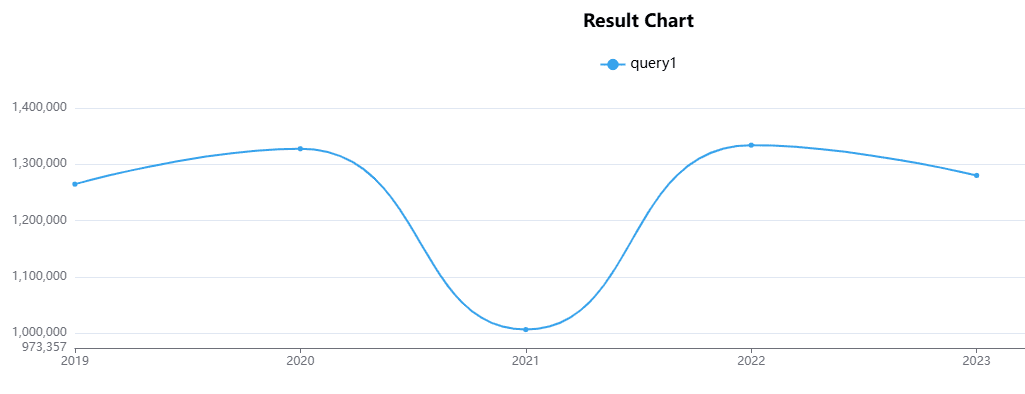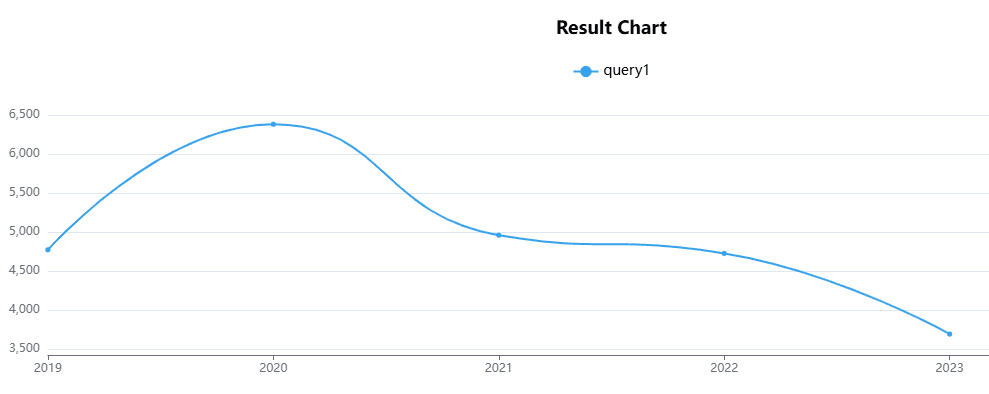
- A recent upward revision by the FBI of violent crime data from 2022, coupled with changes in the reporting process for local law enforcement, have some questioning the accuracy of crime statistics.
During the presidential debate with Vice President Kamala Harris, former President Donald Trump disputed the idea that crime in America was falling.
“Crime in this country is through the roof,” Trump said.

ABC News moderator David Muir pushed back citing FBI crime statistics, saying, “President Trump, as you know, the FBI says that overall violent crime is actually coming down in this country.”
“Excuse me,” Trump responded. “The FBI, they were defrauding statements. They didn’t include the worst cities. They didn’t include the cities with the worst crime. It was a fraud.”
The FBI recently revised data on violent crime from 2022 upwards. Original reporting had shown a 2.1 decrease in violent crime from 2021 to 2022. The new numbers show a 4.5 percent increase. Critics have latched onto the revision as proof of exploding crime and a high-level cover up.
READ MORE: Stealth Edit: FBI quietly revises violent crime stats
The truth is more complicated. It requires understanding the overall trajectory of crime in America and how process changes, meant to improve reporting, actually reduced participation of local law enforcement agencies in 2021 and 2022.
Crime Rates Have Fallen Since 2020, Follows Pattern of Multi-Decade Decline
In 2019, FBI crime data showed a violent crime rate of 363.9 per hundred thousand U.S. residents. The following year, in 2020, the violent crime rate spiked to 385.2. The spike has largely been attributed by criminal justice experts to COVID and social unrest following the George Floyd incident.
The revised 2022 statistics show a violent crime rate of 377.1 per 100,000 residents, a rate still lower than the 2020 COVID spike.
Data from 2023 recently released shows a decline to 363.8 per 100,000 residents, a rate that, if accurate, is on par with the 2019 rates prior to COVID.
Zooming out even further, the U.S. has experienced a substantial reduction in violent crime in the last thirty years. In 1994, the violent crime rate was nearly twice the current rate at 713.6 per 100,000 residents.
Changes in Reporting Create Doubt
The FBI’s Uniform Crime Reporting Program began collecting data on crime committed across the United States in 1930. Law enforcement agencies from across the U.S. voluntarily report their information to the FBI. Prior to January 1, 2021, most reporting of crime by local law enforcement agencies was done through the Summary Reporting System (SRS).
Beginning in 2021, the FBI phased out the SRS and transitioned to only using the National Incident-Based Reporting System (NIBRS).
The FBI has said the most significant difference between NIBRS and SRS is the degree of detail in reporting.
“In the traditional SRS reporting, law enforcement agencies tally the occurrences of eight Part I crimes,” the FBI stated. “NIBRS is capable of producing more detailed, accurate, and meaningful data because it collects data about when and where crime takes place, what form it takes, and the characteristics of its victims and perpetrators.”
The old SRS system, for instance, had limits on which offenses would be reported from a single incident. Only the most serious crime would be reported to the FBI. As an example, if a person was arrested for armed robbery and murder, the incident would only be recorded as a murder. NIBRS, in contrast, requires each individual crime from a single incident to be reported. In the example above, both the murder and armed robbery would make their way into the data. While theoretically more accurate, the transition placed new administrative burdens on local law enforcement that decreased participation.
As a result, only 65 percent of the nation’s population was covered by agencies that turned in data through NIBRS in 2021, down from nearly 95 percent of the population being covered through SRS reporting in 2020.
Cities not participating initially did include major cities like New York, Los Angeles, and Miami. However, this does not mean that no data was recorded for these cities in 2021. Instead, the FBI uses historical crime patterns in jurisdictions not reporting to estimate crime.
Still, experts say 2021 data should be taken with a grain of salt.
Jeff Asher, a crime data analyst and co-founder of the data analytics firm AH Datalytics says, “When I write about crime data, I basically say I’m leaving 2021 numbers in there, but we’re not talking about it because it has an asterisk, and we don’t trust them.”
Participation in NIBRS has increased since 2021. For 2023, the FBI reports that “more than 16,000 state, county, city, university and college and tribal agencies, covering a combined population of 94.3% inhabitants, submitted data through the UCR Program.”
According to an FBI spokesman, every city agency covering a population of at least 1 million people, which includes New York City, Chicago and Los Angeles, contributed a full year of data to the FBI in 2023. Eighty-four out of 90 agencies covering a population of at least 250,000 also reported a full year of data in 2023.
Asher told Verify the bigger challenge is with small jurisdictions not set up to report through NIBRS, but separately has written that the FBI made allowances for those agencies to report using the old SRS system.
What It Means for Mississippi
Mississippi Department of Public Safety Commissioner Sean Tindell told Magnolia Tribune on Wednesday that many local and state agencies are working to get compliant with NIBRS.
“A lot of the local department and even some state agencies are still working on implementing processes where that data can be reported correctly. So, what I think you’re seeing is preliminary data getting changed later as these are agencies are coming on board with their NIBRS compliance,” Tindell said.

In a rural state like Mississippi, some law enforcement agencies consist of a part-time chief and only a hand full of officers.
“Every department across the state is built differently,” Tindell explained. He noted that cost of implementation of NIBRS and the training to ensure compliance can be a challenge for small agencies.
According to DPS, 174 certified agencies out of an estimated 512 law enforcement agencies in Mississippi are not NIBRS compliant as of the time of publication. Agencies tracked include police and sheriff departments, state agencies, and hospitals, colleges, and universities, and other entities with law enforcement. Non-active agencies that DPS is aware of are not included in the count.
The Commissioner said DPS is working with local agencies as well as the sheriff and police chief associations to offer training to gain NIBRS compliance.
Other states have a statewide reporting system that has made it easier for local agencies to report their data, Commissioner Tindell added. He said DPS is looking into taking that step to aid local departments.
The Mississippi Crime Statistics website also allows citizens the opportunity to review the list of jurisdictions and view crime data from local and state agencies.
Tindell cautioned placing too much stock in the FBI data until compliance and reporting catch up. Also at issue is what each state determines to be a violent crime, which can vary.
“Your results are only going to be as good as the data that’s being put in there,” Tindell said, noting that the data is subject to change and should not be viewed “as the Gospel.” He says just as with the 2022 revision, while 2023 currently shows a reduction in crime, “a year from now they might put out revised data that shows an increase.”
FBI Crime Statistics for Mississippi – 2019 to 2023
While Mississippi exceeds the national average on homicides, its rate of violent crime is approximately 35 percent lower than the national average, with a reported 245 violent crimes per hundred thousand residents.
Overall, Tindell said there have been improvements in reducing crime in Mississippi.
“I think law enforcement is doing an excellent job in our state,” Tindell said, pointing to a recent U.S. News & World Report state ranking showing Mississippi at No. 17 in the U.S. for public safety.
Mississippi was also listed as No. 12 in low violent crime, No. 25 for low property crime and No. 25 for crime and corrections.














